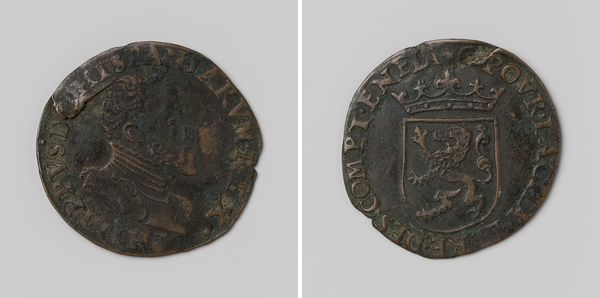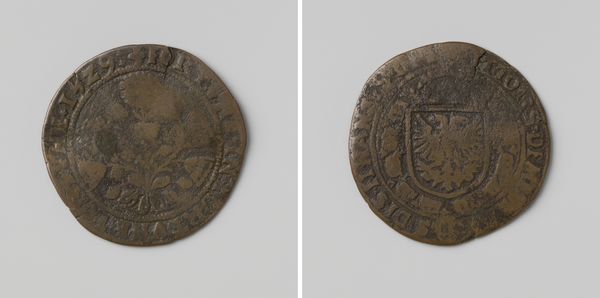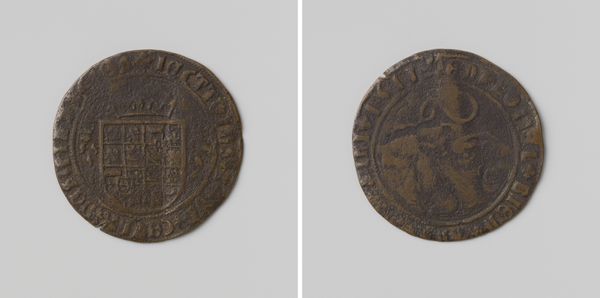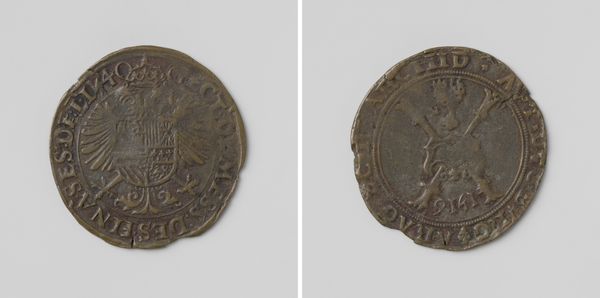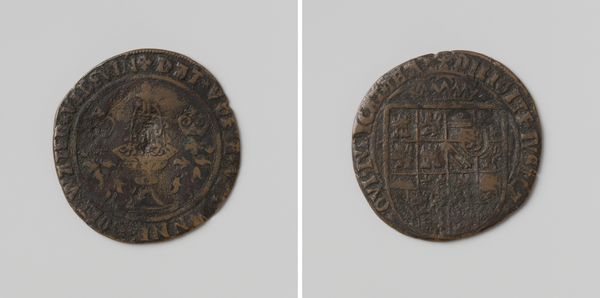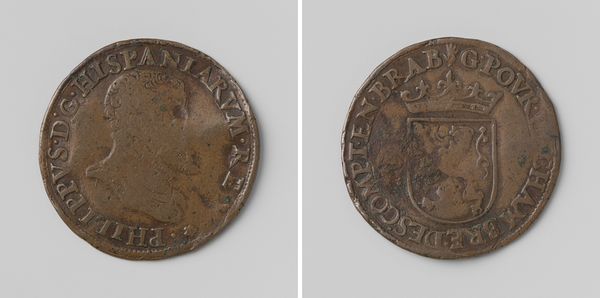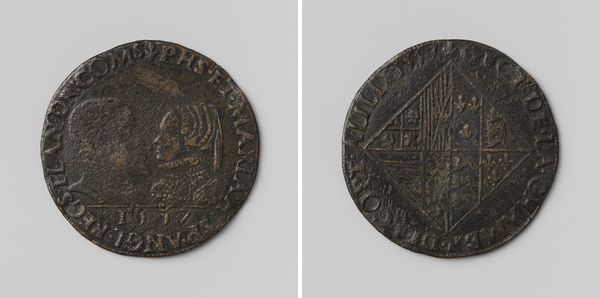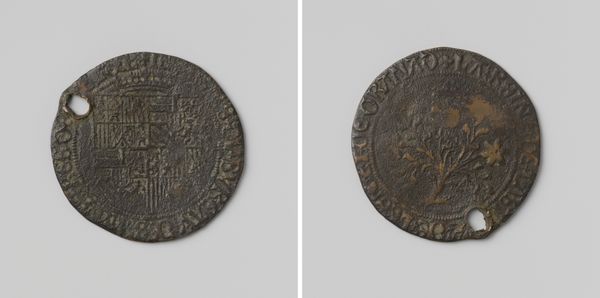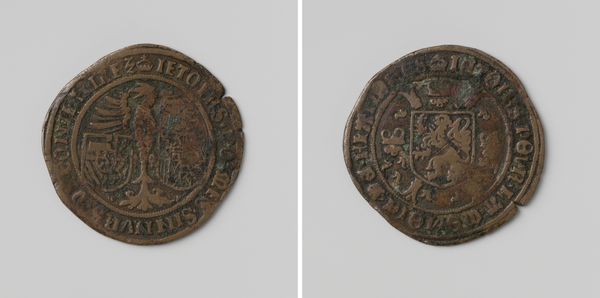
Verdrag van Toledo tussen Karel V, Duits keizer en Frans I, koning van Frankrijk, rekenpenning ten behoeve van Mr. Jacob de Jonge, auditeur van de rekenkamer van Holland 1539
0:00
0:00
print, metal, relief, sculpture
#
portrait
#
medieval
# print
#
metal
#
sculpture
#
detailed texture
#
relief
#
sculptural image
#
sculpture
#
history-painting
Dimensions: diameter 2.8 cm, weight 2.80 gr
Copyright: Rijks Museum: Open Domain
Curator: Let's discuss this fascinating historical object. This is a medal from 1539 commemorating the Treaty of Toledo between Charles V and Francis I, it was a counting token created for Jacob de Jonge, an auditor of the Chamber of Accounts of Holland. Editor: My immediate impression is how time seems to have weathered it—you can almost feel the weight of history etched into its surface. Curator: Absolutely, the metal material adds to that sense of durability and legacy. What's particularly interesting here is understanding the social context of its creation and use. The medal would have been more than just a counting tool; it served as a symbol of status and power for Jacob de Jonge within the bureaucratic structures of Holland. Editor: I'm also thinking about the symbolism— what did the leaders, Charles V and Francis I, represent during that period? Understanding that is crucial, isn't it, to situate this treaty? It was one moment, wasn’t it, in a dance of political alliance and animosity between these powerful monarchs. This Treaty must be read also under a global narrative between France and Spain empires during that period. Curator: Precisely! It's crucial to recognize the intricate web of European power dynamics during that era. The Treaty of Toledo was aimed at forming an alliance, however short-lived, against the Ottoman Empire and Protestant factions. Medals like these helped to disseminate and solidify the rulers' narratives. Editor: So it becomes propaganda in some ways. An attempt to sculpt public perception as well as metal! It invites discussions of political propaganda of early 16th century; these artworks and any historical remain invite us to reflect about that past time and to not repeat actions of our ancestors, promoting instead values like social justice, inclusivity and solidarity for all. Curator: Right, it underscores how even seemingly innocuous objects carry ideological weight. And also provides very intriguing insights into accounting practices in 16th-century Holland. Editor: Indeed, considering our reflections, it speaks volumes about how historical artifacts can bridge socio-political analysis with artistic expression, prompting richer discussions of intersectional historic perspectives that were never accounted back then.
Comments
No comments
Be the first to comment and join the conversation on the ultimate creative platform.

